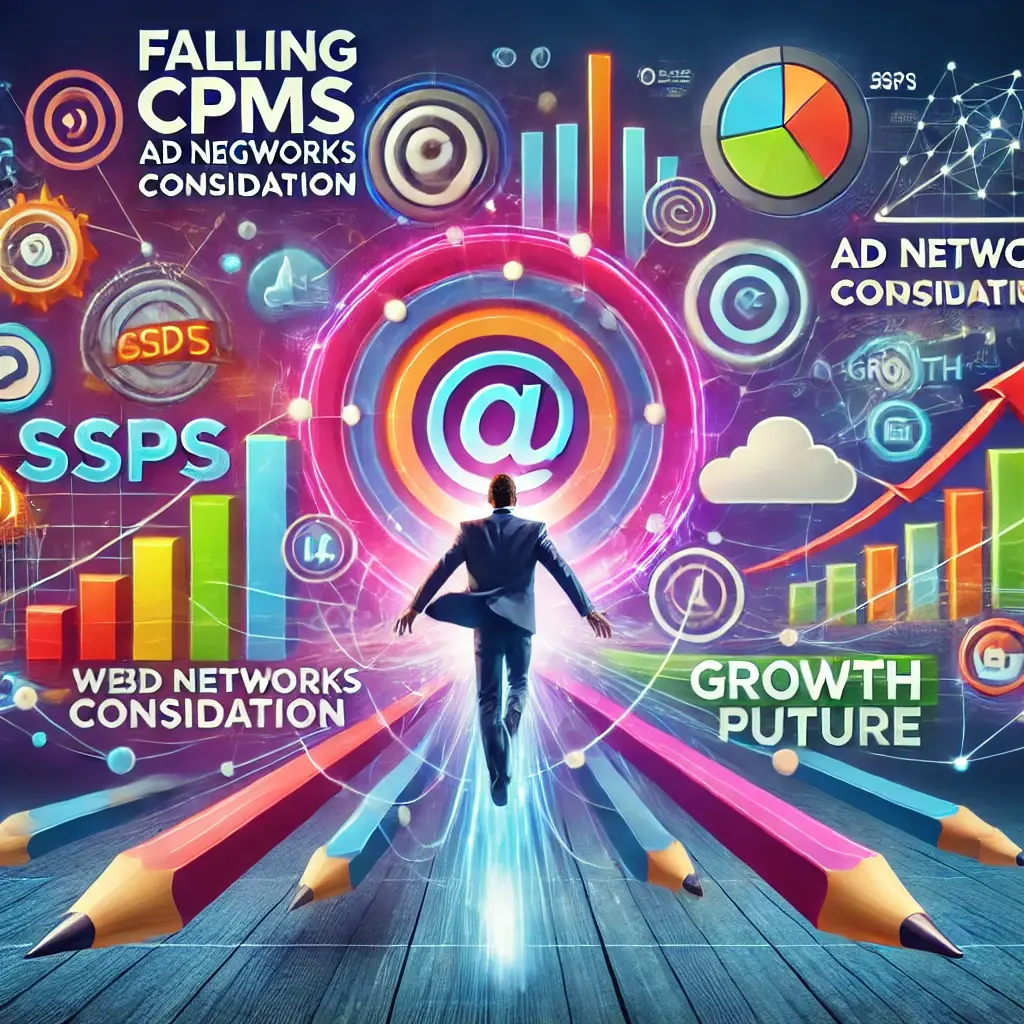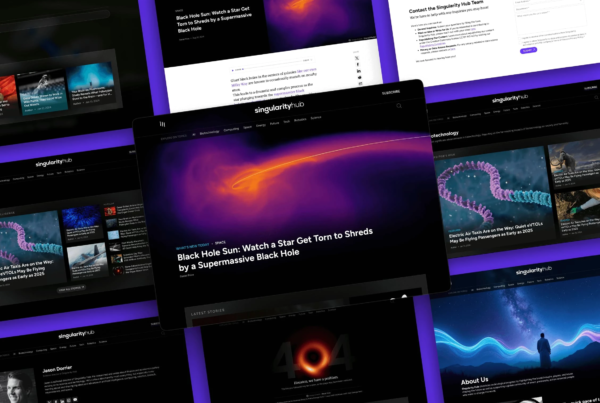Nobody’s shouting that the digital ad marketplace has been particularly generous to website owners and publishers over these past years. With CPMs down year-over-year, many supply-side platforms (SSPs) have been forced to request larger revenue shares in order to keep their doors open. Some ad networks were forced to consolidate after the first few months of 2023 showed less-than optimal market climate and conditions.
However, don’t let anyone tell you that online advertising dead is in the water. In fact, it’s far from it. There’s actually a ton of promising opportunities on the horizon for publishers with strong web, podcast, and video content — AND, there’s a ton of uncertainty given that the “cookieless future” is fast approaching but not here yet.

Let’s unpack the 7 content-based insights that Google Ads Reporting won’t show. Website owners can use this perspective to capture more value in 2024 from their digital advertising. At the top level, my recommendation to website owners trying to use Google Ads Reporting: take control of the variables you can control. From there, trust in monitoring at arms length the variables you can’t.
First —> Remember, Content Is (Still) King
The thing that everyone in the ad supply chain — from advertisers through demand-side platforms (DSPs), SSPs, and ad tech providers — are keenly aware of is that content (and relevance of advertising to content) has to be the single most important objective.
Without good content, ads just don’t work. Made-for-advertising (MFA) sites don’t convert visitors to customers, and get harshly penalized by search engines and ad marketplaces.
Well-established sites with high experience, expertise, authority, and trustworthiness (EEAT) reap the rewards of higher demand, meaning more (and higher) bids for their inventory in ads auctions (NB: provided their outdated ad tech doesn’t tank the UI/UX for visitors).
Advertisers are willing to compete for the right to appear on high-intent, highly relevant placements — with everyone else in the ad supply chain willing to accommodate for their slice of the pie.
With content in mind, here are a seven of the best content-based insights publishers should use to uncover their highest value content is in the eyes of these advertisers. Google Ads Reporting does not share this data. Having this understanding puts a high-traffic website on the path to earn more sustainable recurring revenue:
#1: Content-Level Revenue Reporting (Not in Google Ads Reporting)
The ability to attribute the revenue a publisher’s site generates down to the individual article level is a fundamental requirement for deep learning and content strategy optimization.
If you can’t say definitively how well specific kinds of content perform, how can you confidently say it’s worth investing more in those areas when trying to grow revenue?
Many publishers are forced to suffer through not-knowing due to limitations with their tech stack. They don’t have enough internal data to make these determinations and their partners leave them with half-fulfilled reporting that shows ad metrics without context. Which brings us to number two…
#2: Contextual Web Analytics (Not in Google Ads Reporting)
Content-level ad reporting is a great starting point, but if you can’t see that revenue as it relates to the web analytics of your content, you’re only getting part of the picture.
By layering in the metrics used by traditional web analysts such as users, sessions, and pageviews, you’re able to differentiate between content that’s generating a lot of revenue from lots of pageviews and content that’s generating a lot of revenue because of high CPMs.
We recommend using a blended metric called RPM (revenue per thousand pageviews) to help sort through the noise and find the balance between high traffic and high eCPMs to truly define top-performing content on a site. This is superior to what you can do with Google Ads reporting.
#3: Category Insights (Not in Google Ads Reporting)
Page-level details can be overwhelming (especially for larger sites), and while the capability is there to identify top-performers across thousands of pages, it’s hard to use that data effectively in an executive summary.
That’s why publisher-first platforms like FFlexpress unlock rich, metadata-based insights for customers that tie CMS data back to page-level analytics. With this enhanced view, stakeholders can painlessly pivot around a myriad of dimensions like content category to see top-level reporting of how each section of their site performs when it comes to ads.
With full sorting capabilities across any dimension or metric, you look at your ad data from any angle to see where your traffic is going, how much each impression makes in that space, and how your efforts over time affect those results.
#4: Top-Performing Authors (Not in Google Ads Reporting)
When managing editorial teams, having accessible insights into which authors are generating the most revenue helps drive smart decisions on future projects and contributions. For example, if your highest-earning author is constantly contributing to the content category with the lowest eCPMs, you might be missing out on an opportunity to maximize your return on investment.
Similarly, teams that are looking to build out affiliate content as part of their holistic monetization strategy should look to author-level analytics first to prove out a new concept before then hiring dedicated commerce teams.
In direct sales, having an understanding of which authors seem to generate the content advertisers care about most can help build key relationships and strategic positioning as you plan your editorial and sales roadmaps.
#5: Beyond Ad Slots — Placements (Not in Google Ads Reporting)
Understanding the ad inventory on your site is important when making decisions about which ads to enable/disable, and how changes affect your bottom line. Ads are not a one-size-fits-all solution to monetization in media. Each site is unique, and as a result, where ads are placed on the page (and how frequently they appear) is completely subjective.
Your ad provider should help you understand what levers you can pull to make sure you’re properly balancing page performance, user experience, and revenue optimization on your pages. Google Ads reporting does not do this.
At Flexpress, we do this through a Placement report, which can show you the revenue earned by ad units, in which positions, and on which devices. Placements like Outstream Video & Sticky Footers are often some of the highest-performing ads due to their increased visibility for most viewers.
#6: Partner Transparency (Not in Google Ads Reporting)
Because bids come from a variety of demand partners, we at Flexpress feel that transparency is key to knowing where revenue increases will come from. Within our ads technology, we don’t integrate with partners who have historically engaged in bad practices, deliver ads with high carbon emissions or negative environmental impacts, as well as break any of our brand safety guidelines.
Not surprisingly, many of these partners have a mutual interest in maintaining a high-quality, premium ad experience on sites in our network. Thus, to ensure that the experience is tailored to each site in our network, we give our clients the ability to monitor the performance of each demand partner within the dashboard and provide self-service controls to disable partners that consistently underperform.
Armed with this functionality, publishers are able to cut off any poorly producing partners to free up that inventory for other, better bidders.
#7: Hourly Trends (Not in Google Ads Reporting)
When a publisher’s site has a spike in traffic, you need to be able to identify performance trends around it. Often, daily reporting just isn’t granular enough to achieve that.
With Flexpress Ad’s hourly report, users can easily see trends at a finer level than most ad providers with daily granularity (that you sometimes have to wait to be distributed weekly). Self-service analytics are some of the quickest ways to gain insights about your site.
Wait — why doesn’t Google Ads reporting or my ad provider share these insights with me?
Most providers and Google Ads Reporting simply haven’t invested the time or energy because they don’t see the reward for them. As we touched on in the beginning, most of the ad ecosystem is a game of revenue sharing — taking a piece of the pie at each stop between advertiser and publisher.
While Flexpress also operates on a revenue share with some clients, we know that the experience doesn’t stop at the time of ad delivery. At Flexpress, we built an ecosystem that puts publishers’ content at the center of everything.
Ad revenue reporting has to be content-based for publishers to make informed business decisions. Anything less is just playing guessing games with what remains a critical revenue stream for growing publishers.
—




